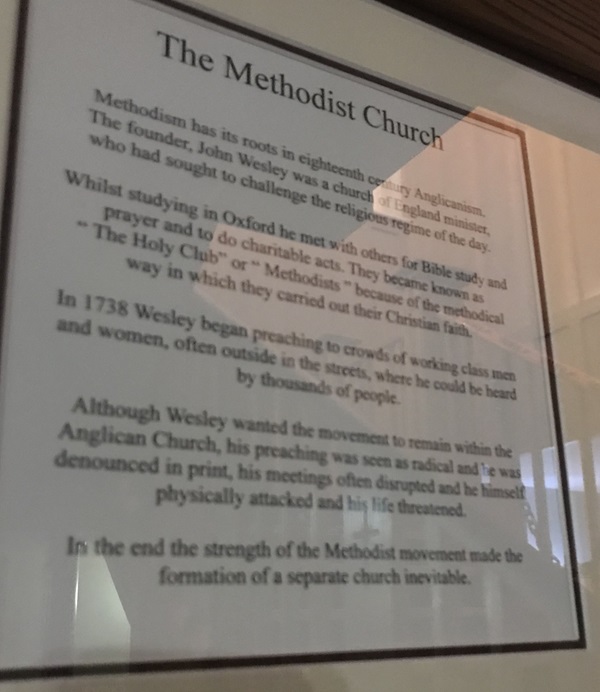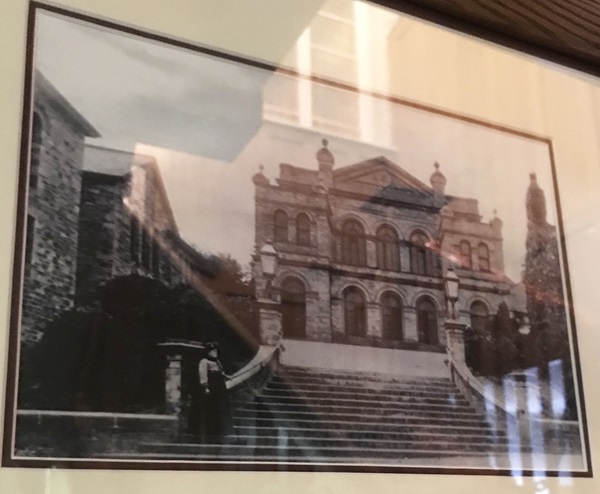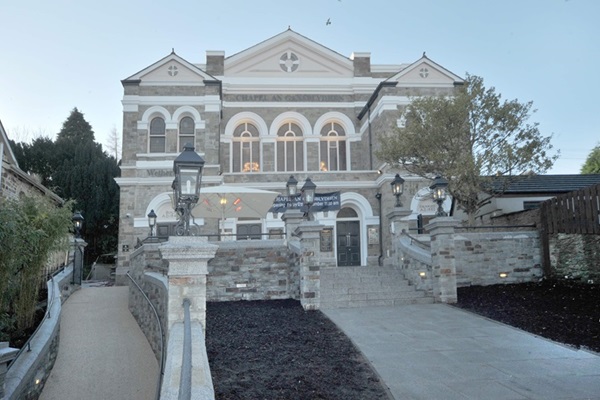This pub is closed permanently. Your nearest Wetherspoon pubs: The Rann Wartha, St Austell and The King Doniert, Liskeard
Built in 1840, this former Wesleyan chapel has long been a landmark at the top end of Fore Street. As it marked the 100th anniversary of the birth of Methodism, it was named the Centenary Chapel or ‘Chapel an Gansblydhen’ in Cornish. Methodism began in the mid 18th century, owing, in large part, to ‘the extensive travelling and organisational abilities’ of John Wesley. During the 1980s, the chapel was altered inside and out.
A photograph, illustration and text about the chapel’s organ.

The text reads: The organ in the Centenary Chapel was built by William Sweetland of bath and installed in 1886.
William Sweetland was born in Devizes on 5 September 1822 and became one of the foremost organ builders of his time. He started his career apprenticed to George Sherbourne in Bath. He went on to set up his own business in 1851 and by 1881 he employed 13 men and 4 boys in his factory situated near the Cleveland Bridge in Bath.
In his lifetime he built and restored over 300 organs, mainly in Wiltshire, Somerset, and Gloucestershire, although his work can be found as far away as Italy, such as his reputation for using the best materials and highest craftsmanship.
He took out several important patents concerning organ building and influenced many other organ builders with his work. He died in 1910 at the grand old age of 88.
Text about the Methodist Church.

The text reads: Methodism has its roots in 18th century Anglicanism. The founder, John Wesley was a church of England minister, who had sort to challenge the religious regime of the day.
Whilst studying in Oxford he met with others for Bible study and prayer and to do charitable acts. They became known as ‘The Holy Club’ or ‘Methodists’ because of the methodical way in which they carried out their Christian faith.
In 1738 Wesley began preaching to crowds of working class men and women, often outside in the streets, where he could be heard by thousands of people.
Although Wesley wanted the movement to remain within the Anglican Church, his preaching was seen as radical and he was denounced in print, his meetings were often disrupted and he himself physically attacked and his life threatened.
In the end the strength of the Methodist movement made the formation of a separate church inevitable.
A photograph of the original Wesleyan Chapel.

External photograph of the building – main entrance.

If you have information on the history of this pub, then we’d like you to share it with us. Please e-mail all information to: pubhistories@jdwetherspoon.co.uk